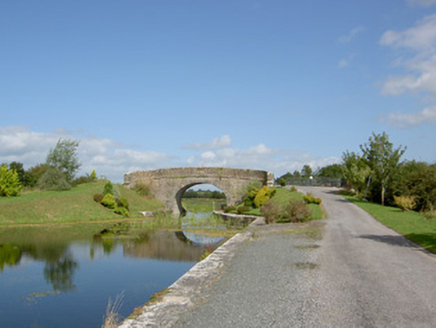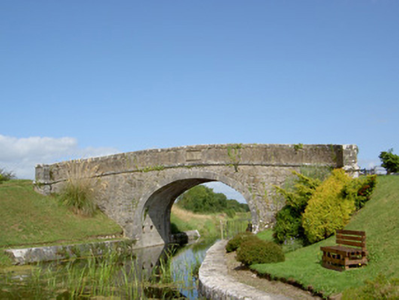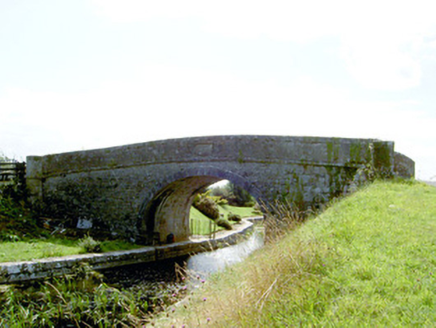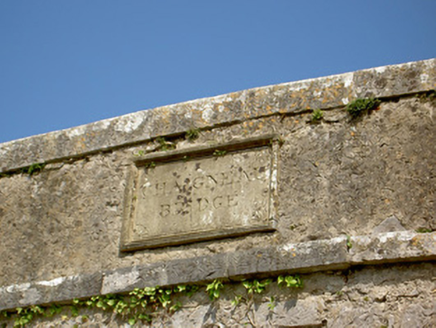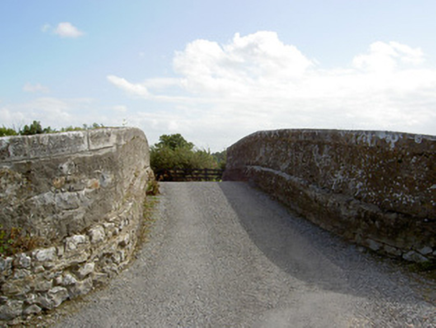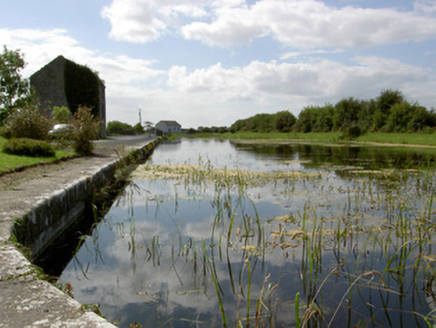Survey Data
Reg No
13402349
Rating
Regional
Categories of Special Interest
Architectural, Technical
Original Use
Bridge
In Use As
Bridge
Date
1810 - 1820
Coordinates
215763, 258448
Date Recorded
01/09/2005
Date Updated
--/--/--
Description
Single-arch humpbacked canal accommodation bridge carrying small road over Royal Canal, built c. 1815. Round/elliptical-headed arch with dressed ashlar limestone voussoirs and dressed ashlar limestone masonry to barrel. Squared rubble limestone construction to spandrel walls, partially rendered, with cut limestone string course at road/deck level. Squared rubble stone construction to parapets (partially rendered) with curving ends terminated in dressed ashlar limestone piers (on square-plan). Dressed limestone coping over parapet walls. Cut limestone plaques (on square-plan) having moulded raised margins to parapets inscribed ‘Chaigneau Bridge’. Towpath to east bank of canal with dressed limestone retaining walls to canal banks (east and west). Wrought-iron turnstile gate under bridge to towpath. Canal widens to the south to form harbour (Ballybranigan Harbour); dressed limestone walls to sides of harbour. Three-storey former canal stores to the southeast side of harbour. Located to the north of Ballymahon.
Appraisal
A typically well-built canal bridge, which is a valuable part of the extensive canal-related built and industrial heritage of County Longford. Although humble in form, this structure has a simple and functional elegance. It is robustly built in good-quality stone masonry, which is testament to the long-term ambitions of the Directors General of Inland Navigation (who took over responsibility for the Royal Canal following the dissolution of the Royal Canal Company in 1813) at the start of the nineteenth century. It was probably built to designs by John Killaly (1766 – 1832), the engineer responsible for the construction of the Royal Canal between Coolnahay to Cloondara, which started in 1814 and was completed in 1817 (28 years after the canal work was started in Dublin). The main contractors involved were Henry, Mullins and McMahon. The canal widens to the southwest to form Ballybranigan Harbour, which is an important amenity in the local area. This bridge is an interesting feature in the rural landscape to the north of Ballymahon and is an integral element of the built heritage of the local area.
